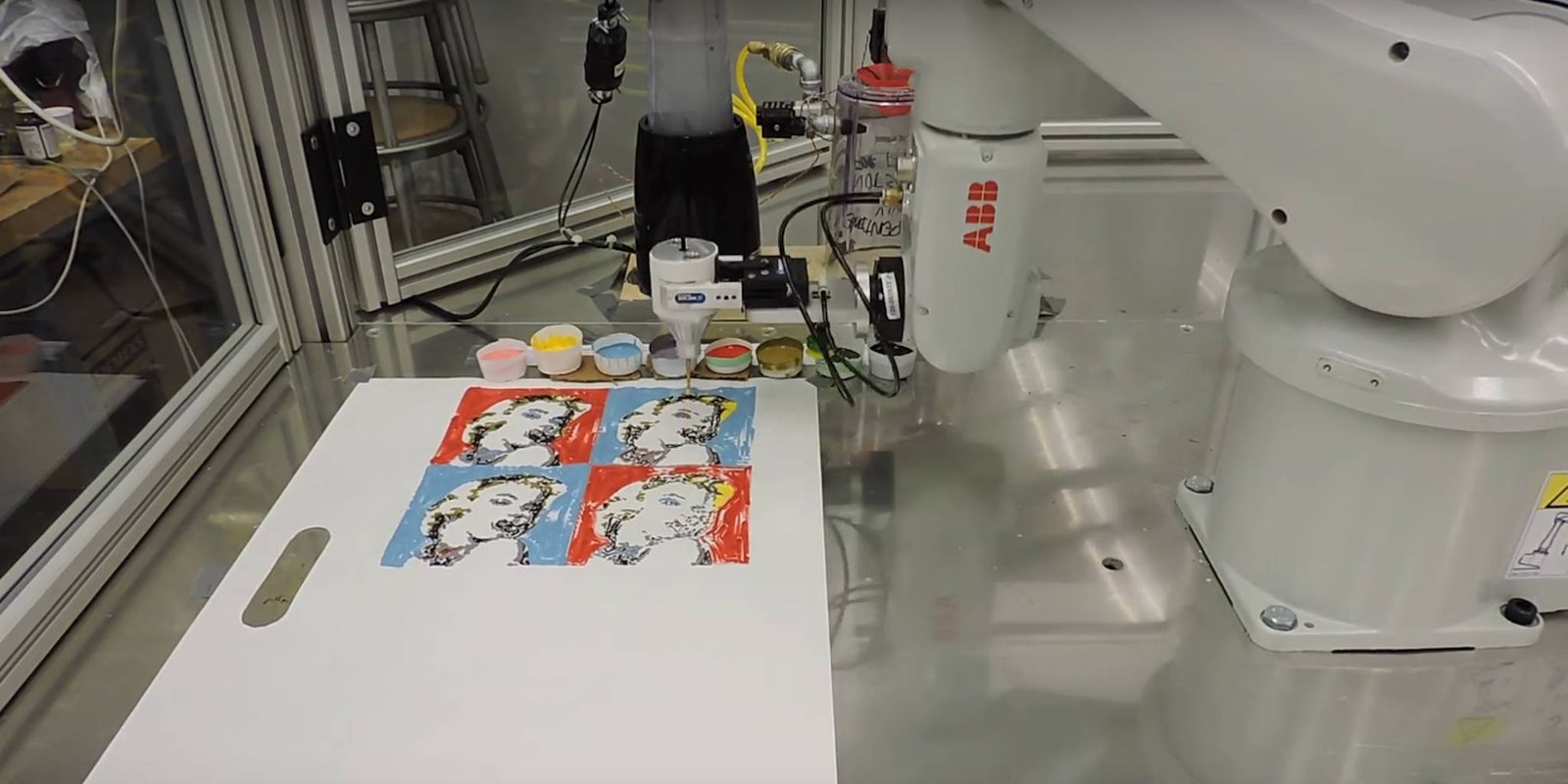In an art contest where robots are the artists, the future of art and artificially-intelligent computational creativity is on display.
Fourteen teams from seven countries contributed 71 entries to the first RobotArt Competition. Started by artist and mechanical engineer Andrew Conru, the event aims to highlight the technical side of art creation and promote AI, image processing, and robotics.
There are two different categories for robot artists: Fully automated and manually generated. Automated artwork means the entire process is done by a robot, running autonomously without input from the human creators. Artists in the manually generated category are robots operated by humans, with no software controls in place.
“Art is one of the signs of humanity, being able to let technology to share in its creation is one step along AI’s journey,” Conru said in an email. “Creating physical art is a hard problem for tech—hence the aspirational benefits of the contest. Art communicates by emotional responses; no one needs art training to have an emotional response.”
Artists are competing for shares of $100,000 in prize money funded by the nonprofit software foundation Compute.org to be awarded to the schools or charities of the participants choice. Conru said the contest is set to run for at least five years and give teams a way to leverage their creations each year. The first year, the contest is focusing on the technical aspects of painting, while next year the focus will be more on artistry.
People with a Facebook account can participate in the voting process; the public vote accounts for 40 percent of the overall score.
Some schools have submitted multiple entries, like students from the Rose-Hulman Institute of Technology. One entry in the fully automated category paints Andy Warhol’s Marilyn Monroe painting using eight colors. The painting is done completely without human input.
Other entries include abstract watercolor paintings from Georgia Institute of Technology and a portrait from Isaac Asimov from the e-David (Electronic Drawing Apparatus for Vivid Interactive Display) that turns a welding robot into a portrait painter.
The RobotArt Competition is yet another example of how machine learning and artificial intelligence can impact creative industries. Last year, researchers created an AI system that separates the style and content of images and ascribes the style to other images, so a computer can make any image look like a famous painting. Research and projects like these raise questions as to how humans place value on art when its created by a computer.
Some of the artists are selling their work—Pindar Van Arman, the artist behind bitPaintr who is participating in the robot art contest, sells his robot-made portraits from a couple hundred dollars to $2,000.
Conru said he expects people to use AI and robotics to create art that’s more physically and intellectually more ambitious than what was possible before ubiquitous tech and robotics.
“Sometimes we do value the fact that a human artist, as human, has shared part of his or her thoughts with us,” Conru said. “We can relate to the shared human experience and take pleasure in knowing that the artist wanted to communicate with us. It will take time for people to understand that artistry goes beyond the traditional tools such as robotics and AI. The RobotArt competition goal is a start.”
H/T The Guardian
